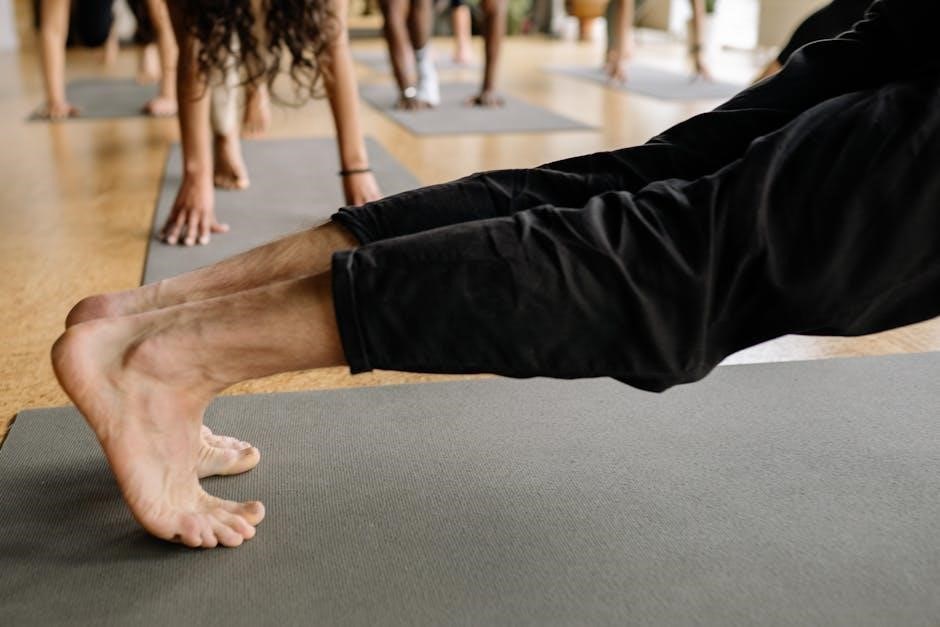Shock Mouth Guard Instructions: A Comprehensive Guide
This guide provides detailed instructions for fitting, maintaining, and troubleshooting Shock mouth guards, ensuring optimal comfort, protection, and durability for athletes of all levels. Follow these steps carefully to achieve a perfect fit and maximize performance. Proper fitting is essential for effective protection, so take your time and repeat the process if necessary. Always prioritize comfort and security to enhance your sporting experience. By adhering to these instructions, you can enjoy a customized fit tailored to your needs. Remember, a well-fitted mouth guard is crucial for both safety and confidence. Let’s get started!
Shock mouth guards are high-quality, boil-and-bite protective gear designed for athletes engaged in contact sports. They provide superior comfort, durability, and protection for teeth and gums. These mouthguards are customizable to fit individual dental structures, ensuring a secure and snug fit. Available in various models, they cater to different needs, from casual play to professional sports. Their gel-lined designs offer shock absorption and long-lasting comfort. Proper fitting is crucial for optimal performance, making them a popular choice among athletes. This guide will walk you through the process of fitting, maintaining, and troubleshooting your Shock mouth guard for the best experience.

Preparation for Fitting
Gather a saucepan, water, timer, and a clean surface. Follow the instructions carefully to ensure proper softening and fitting of your Shock mouth guard for optimal protection.
Materials Needed for Fitting
To ensure a proper fit, gather the following materials: a medium-sized saucepan, water, a timer, and a clean, flat surface. A thermometer is recommended to monitor water temperature accurately. You’ll also need tongs or a spoon to handle the mouth guard safely. Have a bowl of cold water nearby to cool the mouth guard after heating. Paper towels and a mirror can be helpful for drying and checking the fit. Ensure all items are within reach before starting the process. Proper preparation ensures a smooth and effective fitting experience for your Shock mouth guard.
Heating Instructions for the Mouthguard
Fill a medium saucepan with 3-4 inches of water and bring to a boil. Remove from heat and let stand for 30 seconds. Use a thermometer to ensure the water temperature is between 140°F and 160°F. Submerge the mouth guard in the water for 30 seconds (or 12 seconds if you wear braces). Avoid overheating, as this can damage the material. After heating, carefully remove the mouth guard with tongs or a spoon and proceed to the fitting step. Let it stand for a few seconds to cool slightly before placing it in your mouth. Proper heating ensures the mouth guard molds correctly to your teeth.
Fitting Steps
Boil the mouthguard, let it cool slightly, place it in your mouth, bite down firmly, press it against your teeth, ensuring proper alignment for a snug, secure fit.
Boiling and Softening the Mouthguard
Start by boiling water in a saucepan, then remove it from the heat source and let it stand for 30 seconds. Submerge the mouthguard in the hot water for 12-15 seconds (or 10 seconds if you wear braces). This step softens the gel material, making it pliable for molding. Avoid overheating, as it can damage the mouthguard. For models like the ProDental 3-in-1, use lower temperatures and shorter times as specified. Once softened, carefully remove the mouthguard with a spoon and prepare for fitting. This process ensures the mouthguard adapts to your teeth and gums for a snug, protective fit.
Initial Fitting and Alignment
Once the mouthguard is softened, remove it from the water with a spoon and shake off excess. Place it in your mouth, aligning it with the center line of your teeth. Bite down firmly and suck in strongly to create suction, ensuring the mouthguard molds to your teeth and gums. Use your fingers to press the edges of the mouthguard against your teeth through your lips and cheeks for 20-30 seconds. This step ensures a snug, secure fit. Proper alignment is crucial for both comfort and protection, so take care to position it correctly before pressing. This initial fitting sets the foundation for a customized fit.
Cooling and Adjusting the Fit
After biting down, leave the mouthguard in place for 30 seconds to cool slightly. This allows the material to set and conform to your teeth and gums. If the fit feels off, remove the mouthguard and cool it under cold running water for 30 seconds. Reinsert it and check the alignment. If adjustments are needed, repeat the heating and fitting process, ensuring proper alignment and a snug fit. Proper cooling ensures the mouthguard retains its shape and provides maximum protection. Avoid chewing or distorting the material, as this can compromise the fit and durability.
Post-Fitting Checks
After fitting, cool the mouthguard in cold water for 30 seconds. Check for a snug, comfortable fit, ensuring no discomfort or shifting. If adjustments are needed, repeat the process.
Testing the Fit and Comfort
After cooling the mouthguard in cold water for 30 seconds, place it in your mouth and close your lips. Check for a snug, firm fit without discomfort. Ensure the mouthguard aligns with your teeth and gums, providing full coverage. Suck in gently to create a vacuum seal and press the edges firmly with your fingers. If the fit feels loose or uneven, repeat the fitting process. A proper fit should feel comfortable and secure, staying in place without shifting. Avoid chewing or distorting the mouthguard, as this can compromise its shape and protection. Ensure it remains snug and comfortable for optimal performance.
Repeating the Fitting Process if Necessary
If the fit isn’t perfect, repeat the process by re-immersing the mouthguard in boiling water for 30-35 seconds, using a temperature strip to ensure safety. Let it cool slightly, then bite down firmly and press the edges with your fingers. If the mouthguard still feels loose or uncomfortable, repeat the steps again. Avoid overheating, as this can damage the material. Patience is key—multiple attempts may be needed to achieve the ideal fit. Ensure the mouthguard cools completely in your mouth before testing its comfort and security. Proper alignment and snugness are essential for maximum protection and performance.
Maintenance and Care
Regularly clean the mouthguard with mild soap and cold water. Store it in a protective case to prevent damage. Avoid exposure to extreme temperatures.
Cleaning the Mouthguard
Regularly clean your Shock mouthguard with mild soap and cold water to prevent bacteria buildup. Use a soft toothbrush to gently scrub all surfaces. Avoid harsh chemicals or hot water, as they may damage the material. After cleaning, rinse thoroughly and pat dry with a clean towel. For tougher odors or stains, mix equal parts water and mouthwash, soak for 10 minutes, then rinse. Always store the mouthguard in a ventilated case to prevent moisture accumulation. Cleaning after each use ensures hygiene and maintains the mouthguard’s shape and performance. Proper care extends its lifespan and keeps it fresh for optimal protection.
Storing the Mouthguard Properly
Store your Shock mouthguard in a well-ventilated, protective case when not in use to maintain its shape and prevent damage. Avoid exposure to direct sunlight, heat sources, or extreme temperatures, as these can warp the material. Clean the mouthguard thoroughly before storage to prevent bacteria growth. Use the original case or a similar ventilated container to allow airflow and reduce moisture buildup. Do not store it in a damp or enclosed space, as this can lead to mold or odor. Regularly inspect the mouthguard for signs of wear or damage before and after storage. Proper storage ensures longevity and hygiene.

Common Mistakes to Avoid
Avoid overheating or underheating the mouthguard, as this can distort its shape. Never chew or bite down forcefully, as this can damage the material. Improper cooling or fitting techniques can reduce protection and comfort. Always follow the recommended temperature and timing guidelines to ensure a proper fit and durability. Neglecting these steps can compromise the mouthguard’s effectiveness and longevity. Be mindful of these common errors to maintain optimal performance and safety during use.
Chewing or Distorting the Mouthguard
Chewing or distorting the mouthguard can significantly reduce its protective qualities and longevity. The gel-like material is designed to mold to your teeth, not to be reshaped by chewing. Avoid biting down forcefully, as this can create indentations or misalignments. Never manipulate the mouthguard with your hands or teeth, as this can alter its fit and compromise its structural integrity. Proper handling ensures the mouthguard remains effective in absorbing impacts and protecting your teeth and gums. Always store the mouthguard in a protective case when not in use to prevent accidental distortion. Maintain its shape to ensure optimal performance and safety.
Improper Heating or Cooling Techniques
Improper heating or cooling can ruin the mouthguard’s fit and effectiveness. Avoid overheating, as it can make the material too soft, losing its shape permanently. Never leave the mouthguard in boiling water longer than recommended, as this can cause it to become misshapen. Conversely, insufficient heating prevents proper molding. After boiling, cool the mouthguard in cold water for the suggested time to achieve the right firmness. If cooled too quickly or unevenly, the fit may become uncomfortable or loose. Always follow the temperature and timing guidelines provided to ensure the mouthguard molds correctly and retains its protective qualities. Proper techniques are essential for optimal performance.

Troubleshooting Fit Issues
If the mouthguard feels loose, uneven, or uncomfortable, repeat the fitting process, ensuring proper alignment and firm pressing. Cool the guard briefly before re-molding for accuracy.
Adjusting the Mouthguard for Better Comfort
If the mouthguard feels uncomfortable or misaligned, cool it under tap water for 30 seconds. Re-place it in your mouth, ensuring proper alignment with your teeth. Press firmly on the molars and front teeth to mold it securely. Use your fingers to press the edges against your gums and roof of the mouth through your lips and cheeks for 20-30 seconds. Suck in strongly to create a tight seal. If discomfort persists, repeat the fitting process, ensuring the guard is not chewed or distorted. Proper adjustment ensures a snug, protective fit without sacrificing comfort.

When to Seek Further Assistance
If the mouthguard consistently fails to fit properly despite multiple fitting attempts, seek further assistance. Persistent discomfort, uneven alignment, or inadequate protection indicates a need for professional guidance. If the mouthguard is chewed, warped, or shows signs of excessive wear, it may no longer provide optimal protection. Additionally, individuals with braces, dental work, or unique oral structures should consult a dentist or orthodontist for specialized fitting. Contact the manufacturer or a healthcare professional for personalized advice or potential adjustments. Proper fit is crucial for safety and performance, so don’t hesitate to seek help if issues persist.



